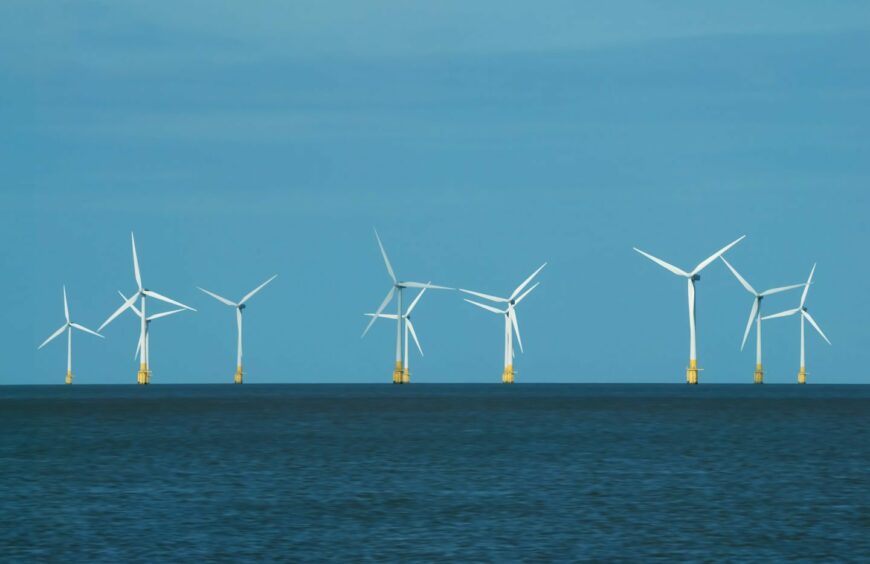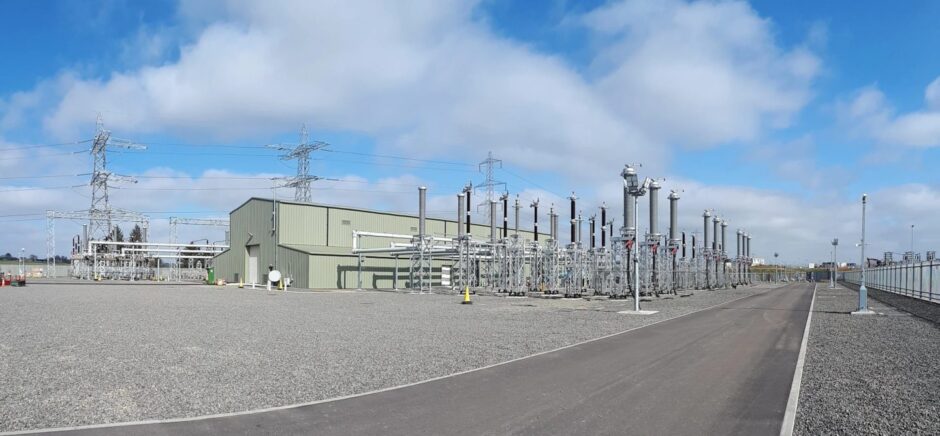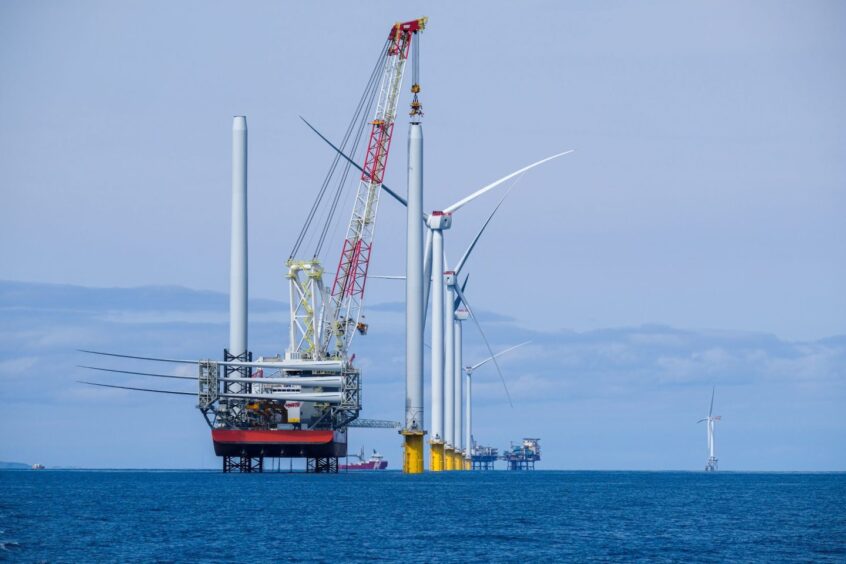
Ocean Winds is considering splitting its 2GW Caledonia offshore wind farm in the Moray Firth into two phases.
The project could be delivered as Caledonia North, a fixed bottom site, and Caledonia South, which has the potential to be both a fixed and floating wind farm.
While the project’s total capacity would be capped at 2GW, the two phases would have capacities of between 900MW and 1.1GW.
The project is located east of the company’s existing projects in the Moray Firth, the operating Moray East and the under-construction Moray West. The 165-square-mile site is based in water with depths of between 40 and 100 metres.
Caledonia project director Mark Baxter told Energy Voice: “The north is shallow with ground conditions similar to the other sites in the Moray Firth. Monopiles could be used in parts of the north and work will continue to establish whether it’s possible to use jackets in the south.
“You can take jackets as deep as you want if you’re willing to pay for it, but it’s a matter of making sure we’re efficient and you know, cost effective in the delivery of the project,” he added.
Ocean Winds had previously said around 75% of the Caledonia offshore site could be constructed using fixed foundations.
Caledonia’s site shares similar soil characteristics to the existing Moray East, which used jacket foundations. Moray West used extra-large monopiles, the largest installed in the UK.
However, fixed foundations are largely limited to water depths of 70m, with floating foundations becoming more optimal.
“There’s continuous innovation in fixed, with hybrid products being developed by other engineering firms that are a mix between a floating and a fixed foundation,” Baxter said.
“We’re accommodating in our consent envelope the opportunity to put a smaller floating site within the Caledonia South site. But equally we’re also putting in some of these more innovative technologies within that envelope to effectively future proof the project, should one of those become viable.”
Ocean Winds previously enlisted Edinburgh-based Wood Thilsted for the foundation design contract.
Grid connection
In addition to the different foundation designs needed, the decision to split the project was driven by constraints around the project’s grid connection.
The National Grid has previously allocated two potential landfall locations for the project’s export cables, one up-to-1.5GW connection at the New Deer substation, with a new substation at Greens to take the remaining capacity.
“The phasing of the project is going to be in line with what grid capacity becomes available,” Baxter said. “We’re still in the process of finalising the grid connection with National Grid via SSEN.”
The decision was made to keep the project flexible as it moves through the consenting and financing stages.
“We’ve created it so it could go as one whole project,” Baxter said. “It just depends on how the landscape materialises when we take the project forward.
“We’re creating an opportunity by having the two phases, but bearing in mind they could still be built as one full 2GW project.
“It all depends on what the timing of the project is and the situation around that,” he added.
As part of the ScotWind programme, the Caledonia offshore wind farm is one of 17 projects that aim to deliver more than 20GW of installed capacity.
Furthermore, Caledonia is one of the few ScotWind projects scheduled to be in operation by 2030.
“If National Grid and SSEN are able to deliver the grid infrastructure in time, then we could be ready to deliver the project to meet that date,” Baxter said.
“Having completed one project and being at the end of completing a second project in the same location as the wind farm with all the data we’ve got and the expertise within that business, we feel that we’re the right developer to try and meet that timetable.”
Towards 2030
The recent release of the National Energy System Operator’s (NESO’s) report on the UK’s clean energy ambitions has said that the UK is capable of decarbonising its electricity grid by 2030.
This would require the country’s offshore wind capacity to grow from the 15GW today to around 28-35GW, with more capacity needing to be contracted in the next two years than the past six years combined.
Getting projects through the application process to make them eligible for a contract for difference (CfD) is vital – especially as the recent Allocation Round 6 (AR6) had to make up for lost ground after AR5 saw no offshore wind projects apply.
“Our aim is to be eligible for the earliest CfD round possible,” Baxter said.
However, there are numerous milestones for Caledonia to hit before it is ready to bid.#
“Assuming our grid connection comes through and it says what we need it to say, then we would be eligible, at the earliest, to bid in 2026.
“We really need to be hitting AR8 to be ready for 2030, with a slim chance in AR9.”
Ocean Winds has previously stated that it aims to submit its planning consents for Caledonia in autumn this year.
“Our goal now is to optimise the design of the wind farm after the point of consent,” Baxter said. “We’ve completed geotechnical surveys on the site and export cable corridor – that work will continue into next year.
“That’ll help us design and properly understand the conceptual foundation and lead us to an actual decision on what foundation type could be in order.
“So next year will be all about engineering optimisation and talking to the market in lieu of eligibility for a CFD auction.”
ScotWind
As one of the leading projects in the ScotWind projects and backed by an experienced developer, Caledonia is a cornerstone of the entire programme.
“Caledonia can start triggering the next stage of offshore wind development,” Baxter said. “For ScotWind, it is definitely one of the few that that can do that now.
“As a fixed site, we need those to come forward because they’re the next credible set of projects at scale that can go in the water and bring all the economic benefits that flow around that.
“Caledonia, along with some of the other fixed sites, can lead from the front in terms of that next phase of offshore wind development in Scotland.
“And as it has the opportunity to include floating foundations, it can benefit the development of floating offshore wind in Scotland.
“But primarily, in terms of speed of execution from a fairly conventional project, it’s one that should be high on the agenda for government to see successfully delivered.”
Baxter added: “It’s evident by our ability in the Moray Firth and the type of technology we’re using to deliver the project that it can be one of the first ones in the water out of Scotland.”
Recommended for you

 © Supplied by Ocean Winds
© Supplied by Ocean Winds © Supplied by SSEN
© Supplied by SSEN © Supplied by Ocean Winds
© Supplied by Ocean Winds